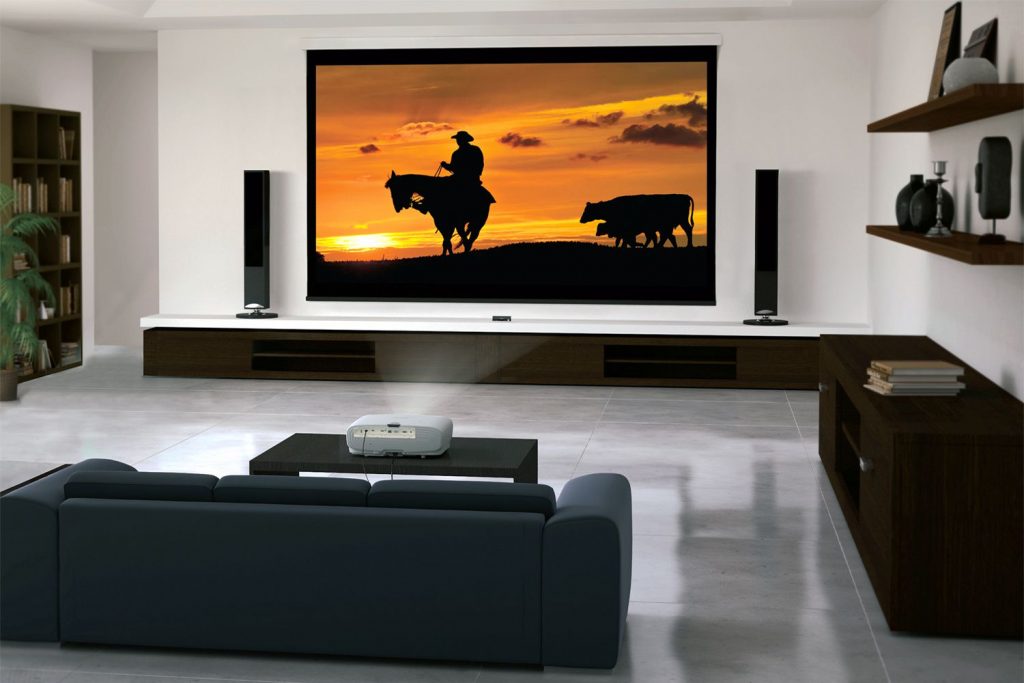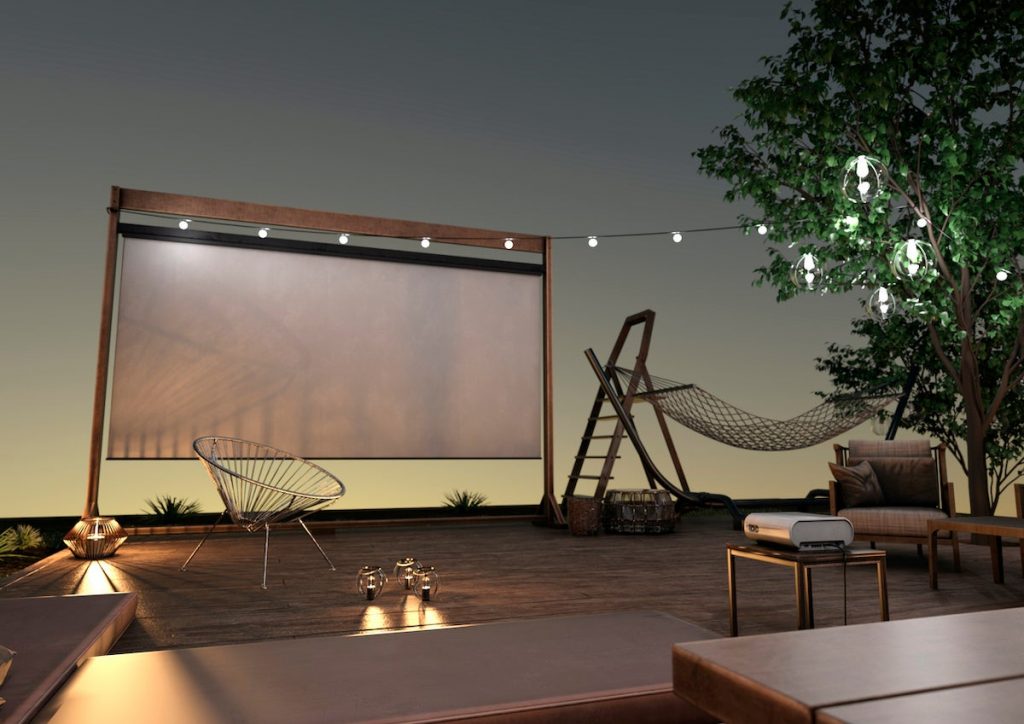When you want the full movie-going experience at home, you can easily put up a projector and a screen in your backyard or home and enjoy a film or two. Or maybe you need a good projector screen for your work presentation. But before you make a purchase, you must first understand what are projector screens made of.
There are different materials used for various types of projector screens. This means that depending on what you intend to use the screen for and where you put it will impact the quality of the content displayed. The movie will be displayed with a high-quality image on the right projector screen.

What Are Projector Screens Made Of?
The standard materials for projector screens are cloth and fiber. The most common projector sought-after on the market is the classical white sheet. However, there are other types of projector screens, like silver, black, and acoustically transparent. Still, the main material for almost all projector screens is cloth.
Projector Screens and Their Material
White screen
First of all, there is the classic white screen. However, if you want to up your game, you can buy a white blackout cloth screen, which according to many projectionists, will produce the best quality image. White blackout cloth screens are made from PVC (Polyvinyl chloride), cotton, and polyester. And the screens are also coated in several layers of black & white foam.
Silver and gray screens
Another classic projector screen is the silver one. In fact, the silver screen was created to be used in dark rooms to enhance the light projected on it. This means silver screens are naturally more reflective. On the other hand, gray screens are a matte version of silver screens and absorb more light.
Acoustically transparent screens
The acoustically transparent screens allow sound to pass through them but prevent light, leading to better image and sound quality. Acoustically transparent screens are available in two types – perforated and woven.
- Perforated screens are made from PVC, and as per their name, they contain tiny holes that are invisible to the human eye; the holes are there to let the sound waves pass through them
- Woven screens also let the sound waves pass through the special pattern
Dark blackout screens
Dark backout screens, like the white ones, are made from a mix of PVC, cotton, and polyester. Dark blackout screen cloth serves to improve the black levels of the image projected.
Make Your Own Projector Screen
As an option, you can even make a screen at home using materials that are readily available to you, or you can purchase some at a pretty fair price. If you decide to make your own projector screen, all you need is a reflective surface that can preserve an appearance of brightness.
A few materials are generally handy when making your projector screen. The best surface is white, and a bed sheet is the ideal white object for the task. There are many ways to make a projector screen, like with blackout cloth, fiberglass fabric, or on a wall in your backyard.
Read more: What Can I Use for a Projector Screen?

Simple white sheet
One way that you can make a projector screen is out of a thick, white sheet. Just make sure to remove any creases that can smudge the pictures. If you use a thin sheet, the light will be able to pass through it, so you need thick sheets. The light will be kept on it by using thick sheets.
If you do not have a thick sheet, combine several thin ones. Alternatively, you might put a dark sheet behind a thin white sheet. Doing so will maintain light shining on the sheets, allowing you to see the images.
Blackout cloth
Blackout fabric has layers of thin rubber coating and is made up of 70% polyester and 30% cotton. Its special abilities for image projection result from this combination. The blackout cloth has two separate uses on each side. While the foamed side absorbs or blocks light, the smooth side reflects it.
You will be able to achieve the ideal balance of light reflection and absorption because one side absorbs light and the other side reflects it. When projected on, these qualities result in high-quality images.
Fiberglass fabric
This is one of the best projector screens to use, which is entirely made of fiberglass with a PVC coating. Its unique matte surface was created to highlight the image details. It has a silky rigidity that provides fine definition with a contrast of black and white.
It functions to reflect and absorb light simultaneously, much like the blackout cloth. The black PVC coating at the back contrasts with the fiberglass luster. This is what gives the fabric its matte finish.
Spandex cloth
Spandex cloth is another excellent option for a projection screen that you can make yourself. It is constructed of 20% spandex and 80% nylon or polyester. The fabric’s 20% spandex content is what makes it so stretchy. It can be stretched lengthwise and crosswise in four different ways. Its capacity to stretch has various advantages.
One benefit is that you will not have to worry about creases and wrinkles. Any of that can be eliminated with good stretching. Another benefit is that you can use this projector screen material without using a stand or framing it. Just stretch out the four sides, and you are all set.
Use your walls
If you have white walls in your home, you can easily use them as projector screens without hanging a sheet or looking for materials to purchase. You can set up your projector, turn off the lights and start watching the movie.
Also read: How to Hang a Projector Screen on the Wall
Conclusion
What are projector screens made of? As you can see, projector screens are made with various fabrics and materials. However, there are some intersections. For example, most projector screens are made of some mix of PVC and cotton.
But if you want to enjoy a movie night without having to go out and buy a brand new screen projector. I suggest going through your closet and finding a thick white sheet. It is an excellent alternative for a DIY projector screen.